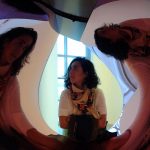By The New College Dining Hall Research Team
In the summer of 2018, The University of Toronto Food Services reached out to the Innovation Hub to help gather insights about students’ eating experiences on campus. They were in the initial stages of redesigning the Audrey Taylor Dining Hall at New College and were looking to get a better sense of how the physical space, social environment, meal plans, and food options could better meet students’ needs.





 By Mia Sanders, Training Facilitator
By Mia Sanders, Training Facilitator